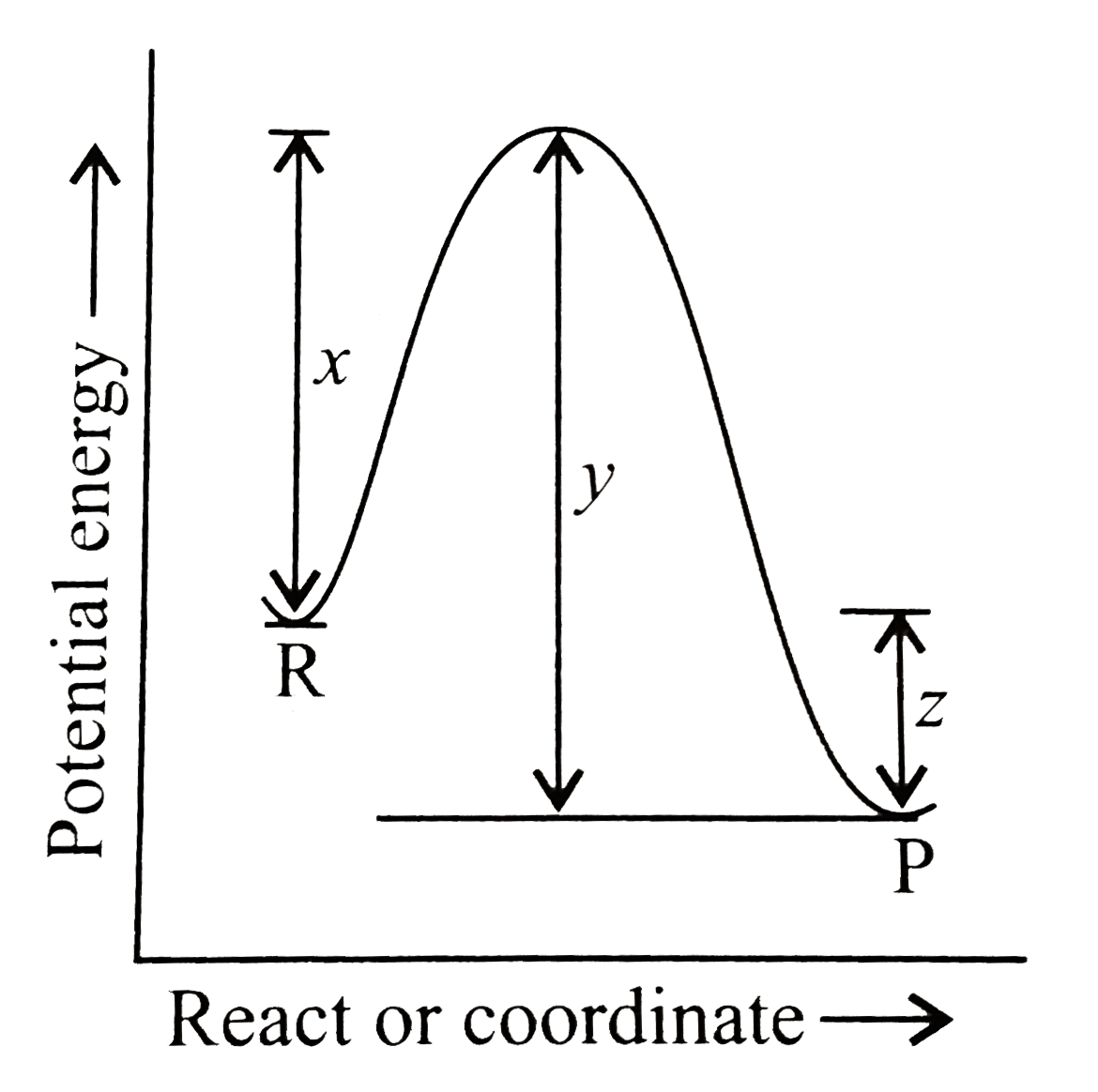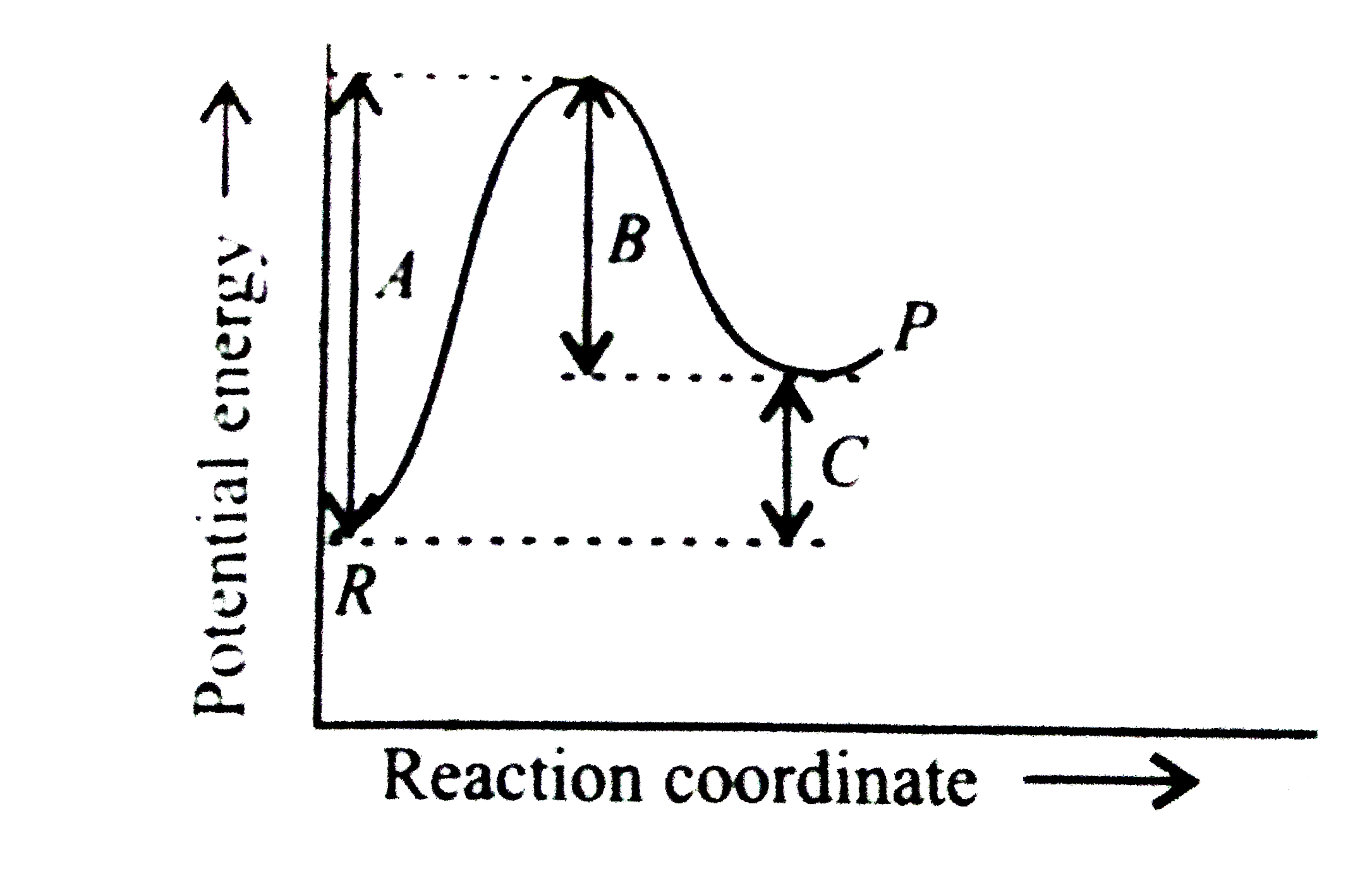The potential energy diagram for a reaction R→P is given below. ΔHɵ of the reaction corresponds to the energy

x
y
z
(x+y)
The correct Answer is:C
For exothermic reaction,
ΔHɵ=(PEof Product)−(PEof reactant)=Z
Topper's Solved these Questions
- CHEMICAL KINETICSBOOK - CENGAGE CHEMISTRY ENGLISHCHAPTER - CHEMICAL KINETICSEXERCISE - Exercises Assertion-Reasoning
22 Videos
- CHEMICAL KINETICSBOOK - CENGAGE CHEMISTRY ENGLISHCHAPTER - CHEMICAL KINETICSEXERCISE - Exercises Integer
15 Videos
- CHEMICAL KINETICSBOOK - CENGAGE CHEMISTRY ENGLISHCHAPTER - CHEMICAL KINETICSEXERCISE - Exercises Multiple Correct
33 Videos
- CARBOXYLIC ACIDS AND THEIR DERIVATIVESBOOK - CENGAGE CHEMISTRY ENGLISHCHAPTER - CARBOXYLIC ACIDS AND THEIR DERIVATIVESEXERCISE - Exercises Archives (Analytical And Descriptive)
34 Videos
- COORDINATION COMPOUNDSBOOK - CENGAGE CHEMISTRY ENGLISHCHAPTER - COORDINATION COMPOUNDSEXERCISE - Archives Subjective
18 Videos
Similar Questions
The potential diagram for reaction R→P is given below:
ΔH∘ of the reaction corresponds to the energy

View SolutionThe potential energy diagram for a reaction X→Y is given. A and C in the graph corresponding to

View SolutionThe energy diagram of a reaction P+Q→R+S
is given. What are A and B in the graphs?

View SolutionDraw the potential energy diagram for an exothermic reaction. Explain the terms:
threshold energy
View SolutionDraw the potential energy diagram for an exothermic reaction. Explain the terms:
overall energy change for the reaction
View SolutionWhich of the following is potential energy diagram for SN1 reaction?
View SolutionWhich of the following is potential energy diagram for SN1 reaction?
View SolutionThe energy profile diagram for the reaction:
CO(g)+NO2(g)⇔CO2(g)+NO(g) is given below:

the heat of the reaction is
View SolutionDraw the potential energy diagram for an exothermic reaction. Explain the terms:
activation energy of forward reaction
View SolutionDraw the potential energy diagram for an exothermic reaction. Explain the terms:
activated complex
View Solution
